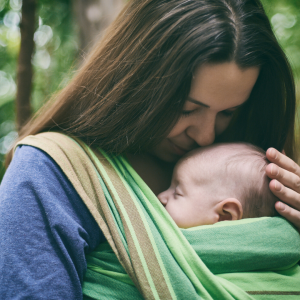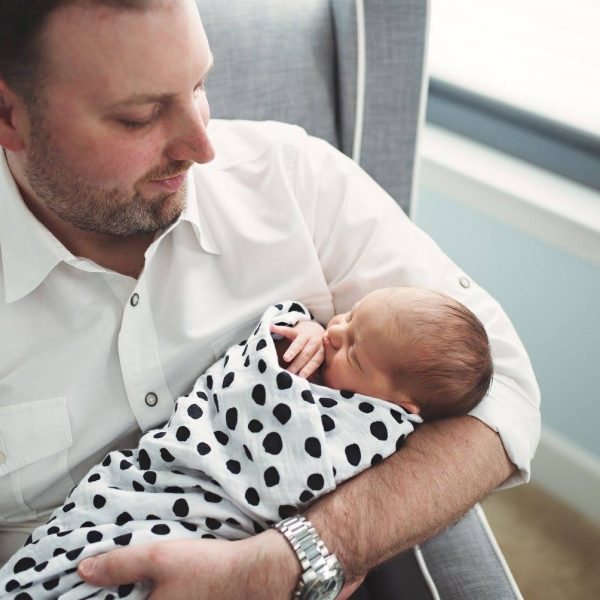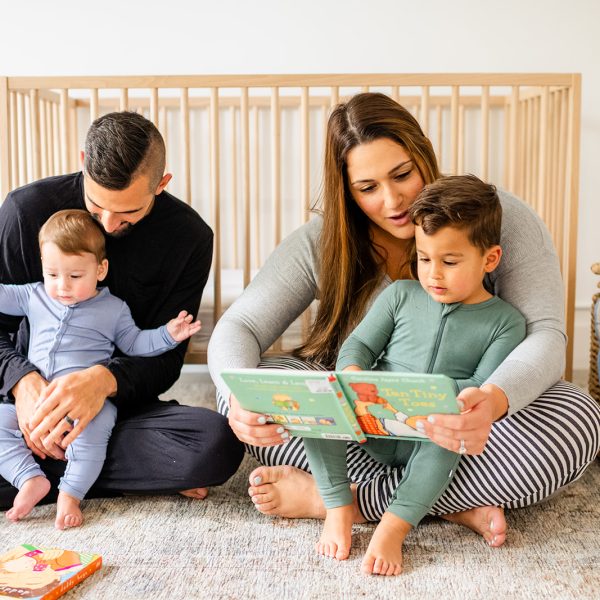Many people have a false belief that you can’t have a baby who sleeps well and also wear your baby. I’m here to give you some information about baby wearing such as how to do it safely and also give you the comfort knowing you can enjoy those baby snuggles AND have an amazing sleeper!

As you know I love my evidence, and a recent study in the Journal of Infant and Behavior Development showed that babywearing predicted maternal beliefs emphasizing responsiveness to infant cues. So much about sleep education is understanding your baby’s sleepy cues. If we don’t take the time to get to know our babies then this process of teaching a baby to sleep becomes much more challenging. If you are curious about sleep schedules and when the best time to try a carrier nap would be then be sure to check out my newborn through 4 month sleep guide!
Baby wearing 101
So how do we know how to safely baby wear? Some of these wraps, carriers, and slings take an entire degree to understand 🙂 First off I highly recommend finding a local class or workshop to try on a bunch of carriers to see what is most comfortable for you and your baby. Local to me in Washington DC, there is a great place called the breastfeeding center that offers baby wearing consults and classes! Also across America check out babywearing international for meetups.
When baby is sleeping on you remember the word T.I.C.K.S ( I really wish they used a different word, but the information is there haha). It stands for:
- Tight
- In view all the time
- Close enough to Kiss
- Keep Chin off the Chest
- Supported Back
Once you safely can wear your baby I want you to know that baby wearing is not a bad habit you are forming! Sure practicing sleeping in the crib for 1 or 2 naps is a great idea, but guess what? In the beginning newborn stages, babies are sleeping very very frequently so you have a lot of chances for practice! Naps don’t truly begin to consolidate until a few months old and the best nap to have in the crib is the first nap of the day.

So enjoy those newborn snuggles, kiss their foreheads often, and learn those sleepy cues as you also may get a free hand for your breakfast and coffee. If you need any support to teach sleep skills, understand schedules and your baby is ready for a more predictable routine then please reach out with a free discovery call here



